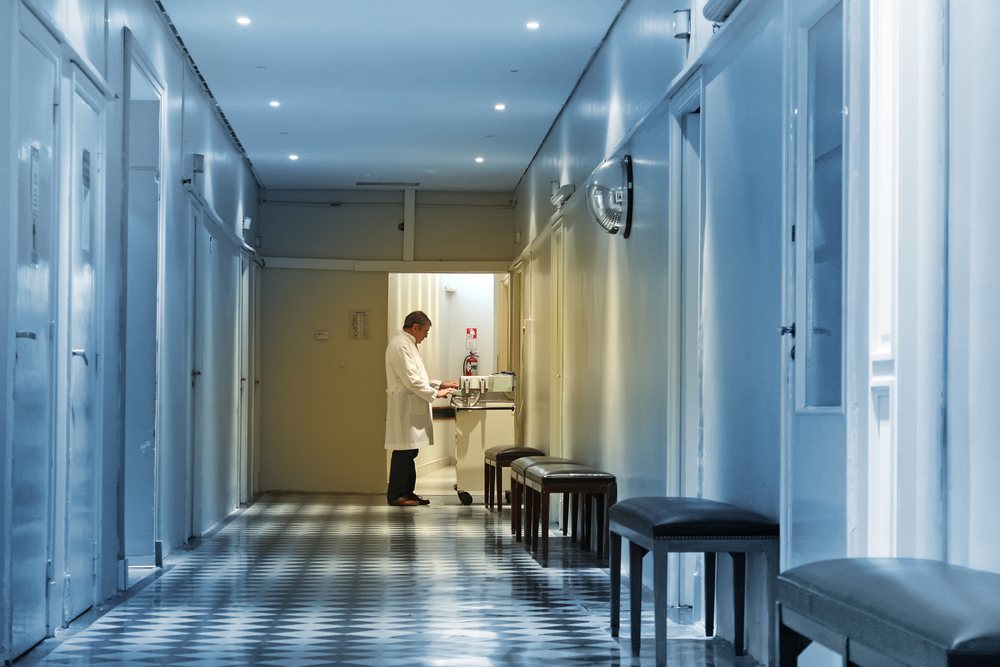Reverse the Doctor Shortage by Restoring Primary-Care Prestige (Op-Ed)


Dr. Bruce Koeppen is founding dean of the Frank H. Netter MD School of Medicine at Quinnipiac University. He contributed this article to LiveScience's Expert Voices: Op-Ed & Insights.
The United States currently faces a growing physician shortage. While this shortage is across many of the specialties and subspecialties of medicine, it is most acute in the primary-care disciplines, traditionally defined as family medicine, general internal medicine and general pediatrics. As medical educators, we must tackle the challenge of restoring the prestige of a career in primary care.
It is quite an undertaking. Fewer students enter medical school with an eye toward a career in primary-care medicine, and many of those who do often change their mind as they go through training.
The reasons for students' decisions vary, and include perceptions that primary-care medicine is less prestigious than subspecialty medicine, that the knowledge base to be mastered is too broad, that the lifestyle (being on call) is too demanding and that the work-patient interactions are not interesting. Earnings potential may be a factor for some, but for the majority of students, I believe the other factors are more important.
If we are to reverse the trend of fewer medical students choosing careers in primary care, we must address the aforementioned perceptions and change the environment in which primary-care physicians are trained.
The goal of effective primary care is to keep patients out of hospitals . Yet residency training in the primary-care disciplines occurs predominantly in acute-care facilities. It is no wonder that resident physicians surrounded by specialists in this working and learning environment change their minds and pursue careers in subspecialties.
Primary care is delivered outside hospitals, and residency training for primary-care disciplines must also take place, predominately, outside hospitals. The Affordable Care Act provides grants to establish "Teaching Health Centers," environments in which exactly that kind of training takes place. We need to learn from these Teaching Health Centers, expand them and provide new training sites with stable funding beyond the term of these initial grants.
Get the world’s most fascinating discoveries delivered straight to your inbox.
The latest trend in primary-care delivery is the patient-centered medical home, in which teams of health professionals — consisting of physicians, nurse practitioners, physician assistants, physical and occupational therapists, social workers, mental-health counselors, and nutritionists — take care of patients. As delivery of care moves from the traditional solo-practice model to patient-centered medical homes, the perceptions of what it means to be a primary-care physician will change.
In the medical-home model, each professional brings specific expertise to the care of the patient, freeing physicians to focus on aspects of patient care that require their expertise. With each member of the team practicing at the "top of their training," the result is an exciting and fulfilling work environment for all. Most importantly, patients receive better-coordinated, higher-quality care. Done right, this model will lower total health care costs by keeping patients well longer.
Through changes in both training and work environments, I believe we will see more medical students choosing careers in a primary-care discipline that they will find professionally fulfilling. Changes in the reimbursement system for primary-care services will also help.
I believe this is an exciting time to be a primary-care physician. If the U.S. can make the necessary changes, its health care system will be a better place for everyone — the workforce will be happier and more productive, and patients will stay healthier longer.
The views expressed are those of the author and do not necessarily reflect the views of the publisher. This article was originally published on LiveScience.com .


